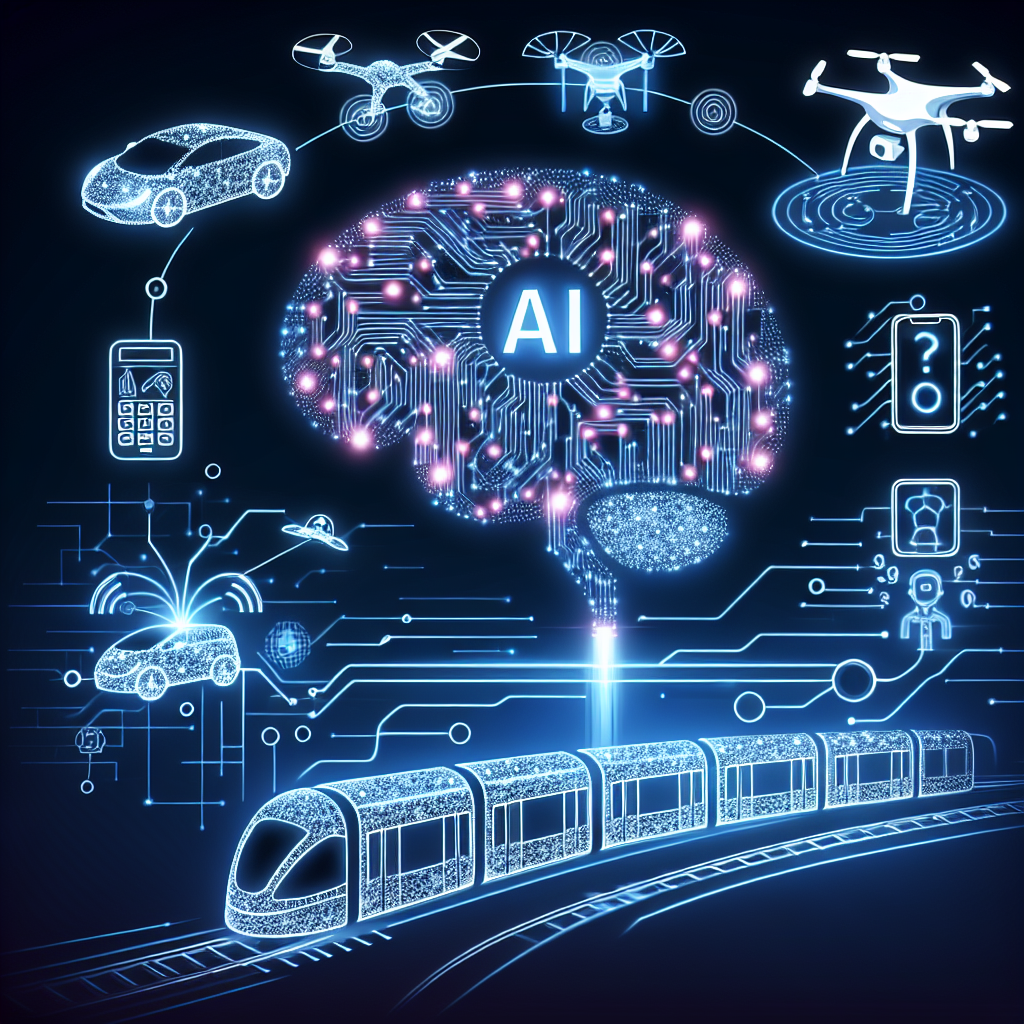The Impact of AI-driven Solutions on Transportation
Artificial Intelligence (AI) has been making waves in various industries, and the transportation sector is no exception. With the rapid advancements in AI technology, transportation companies are leveraging AI-driven solutions to improve efficiency, safety, and overall user experience. From self-driving cars to traffic management systems, AI is transforming the way we move from point A to point B.
In this article, we will explore the impact of AI-driven solutions on transportation and how they are reshaping the industry.
1. Self-Driving Vehicles
One of the most significant advancements in transportation technology is the development of self-driving vehicles. Companies like Tesla, Waymo, and Uber are investing heavily in AI to create autonomous vehicles that can navigate roads safely and efficiently. These vehicles use sensors, cameras, and AI algorithms to detect obstacles, follow traffic rules, and make split-second decisions to avoid accidents.
Self-driving vehicles have the potential to revolutionize transportation by reducing accidents, traffic congestion, and emissions. They can also provide mobility solutions for people who are unable to drive, such as the elderly or disabled. However, there are still challenges to overcome, such as regulatory hurdles, public acceptance, and cybersecurity concerns.
2. Traffic Management Systems
AI-driven traffic management systems are another key application of AI in transportation. These systems use real-time data from sensors, cameras, and GPS devices to monitor traffic flow, predict congestion, and optimize traffic signals. By analyzing this data, AI can help reduce traffic jams, improve road safety, and lower fuel consumption.
For example, AI-powered traffic lights can adjust their timing based on traffic conditions to reduce wait times and improve the flow of vehicles. AI can also analyze historical traffic patterns to predict future congestion and suggest alternative routes to drivers. Overall, AI-driven traffic management systems can make commuting faster, safer, and more efficient.
3. Predictive Maintenance
AI is also being used in transportation for predictive maintenance of vehicles and infrastructure. By analyzing data from sensors and monitoring systems, AI algorithms can predict when a vehicle or a piece of equipment is likely to fail and schedule maintenance before a breakdown occurs. This can help prevent costly repairs, reduce downtime, and extend the lifespan of assets.
For example, airlines use AI-powered predictive maintenance to monitor the health of aircraft engines and other critical components. By analyzing data on factors like temperature, pressure, and vibration, AI can detect anomalies that indicate potential issues. This allows maintenance crews to address problems proactively and avoid costly delays.
4. Ride-sharing and Mobility Services
AI-driven ride-sharing and mobility services have also transformed the way people travel. Companies like Uber, Lyft, and Grab use AI algorithms to match passengers with drivers, optimize routes, and set prices dynamically based on demand. This has made transportation more convenient, affordable, and accessible for millions of people around the world.
AI algorithms can analyze vast amounts of data, such as traffic patterns, weather conditions, and user preferences, to provide personalized transportation solutions. For example, AI can predict when and where demand for rides will be highest, allowing ride-sharing services to deploy more drivers to those areas. This can reduce wait times for passengers and increase earnings for drivers.
FAQs
Q: Are self-driving vehicles safe?
A: Self-driving vehicles are still in the testing phase, and there have been some high-profile accidents involving autonomous cars. However, research shows that self-driving vehicles have the potential to be safer than human drivers, as they do not get distracted, tired, or intoxicated. Companies are continuously improving the technology to make self-driving vehicles as safe as possible.
Q: How does AI improve traffic management?
A: AI can analyze real-time data from sensors, cameras, and GPS devices to monitor traffic flow, predict congestion, and optimize traffic signals. By adjusting traffic lights, suggesting alternative routes, and coordinating traffic flow, AI can reduce traffic congestion, improve road safety, and lower fuel consumption.
Q: What are the benefits of AI-driven ride-sharing services?
A: AI-driven ride-sharing services provide several benefits, such as convenience, affordability, and accessibility. By matching passengers with drivers, optimizing routes, and setting prices dynamically based on demand, AI makes transportation more efficient and user-friendly. This has revolutionized the way people travel and has made it easier for individuals to get around.
In conclusion, AI-driven solutions are revolutionizing the transportation industry by improving safety, efficiency, and user experience. From self-driving vehicles to traffic management systems, AI is transforming the way we move from place to place. As technology continues to advance, we can expect to see even more innovative applications of AI in transportation in the future.

